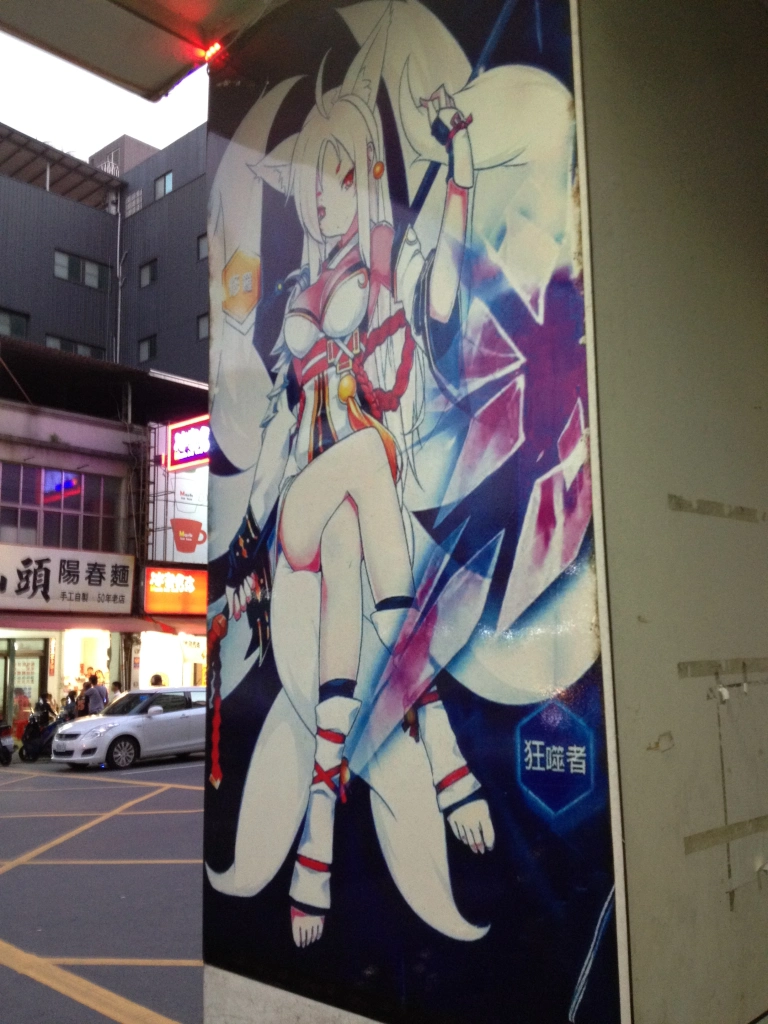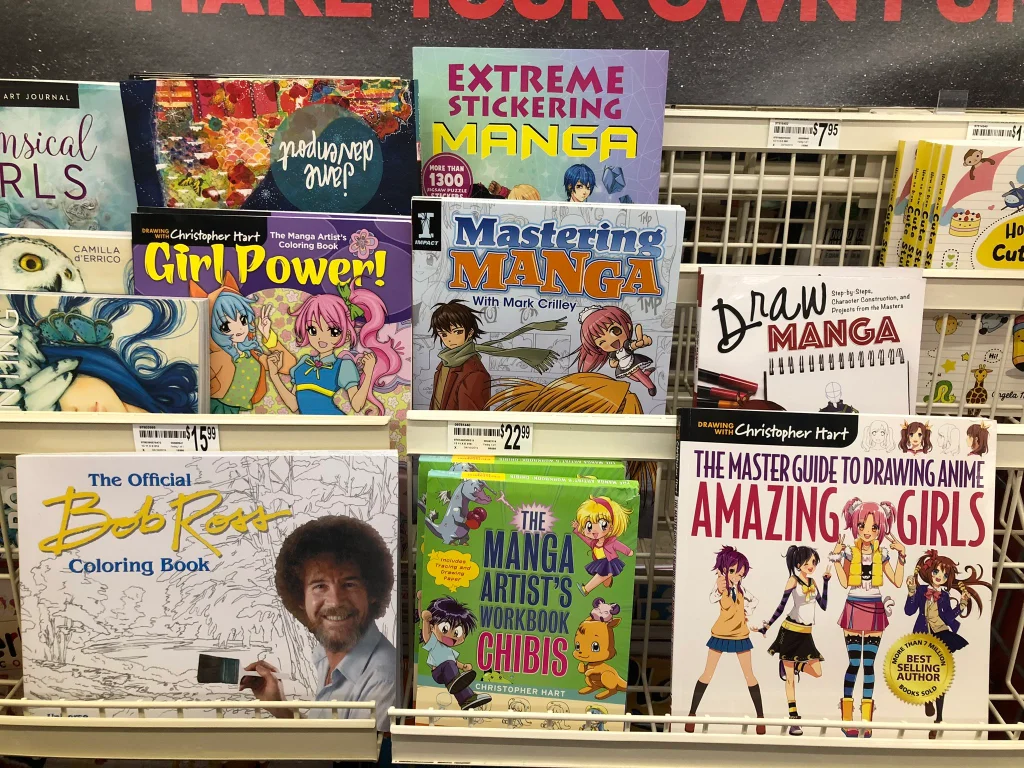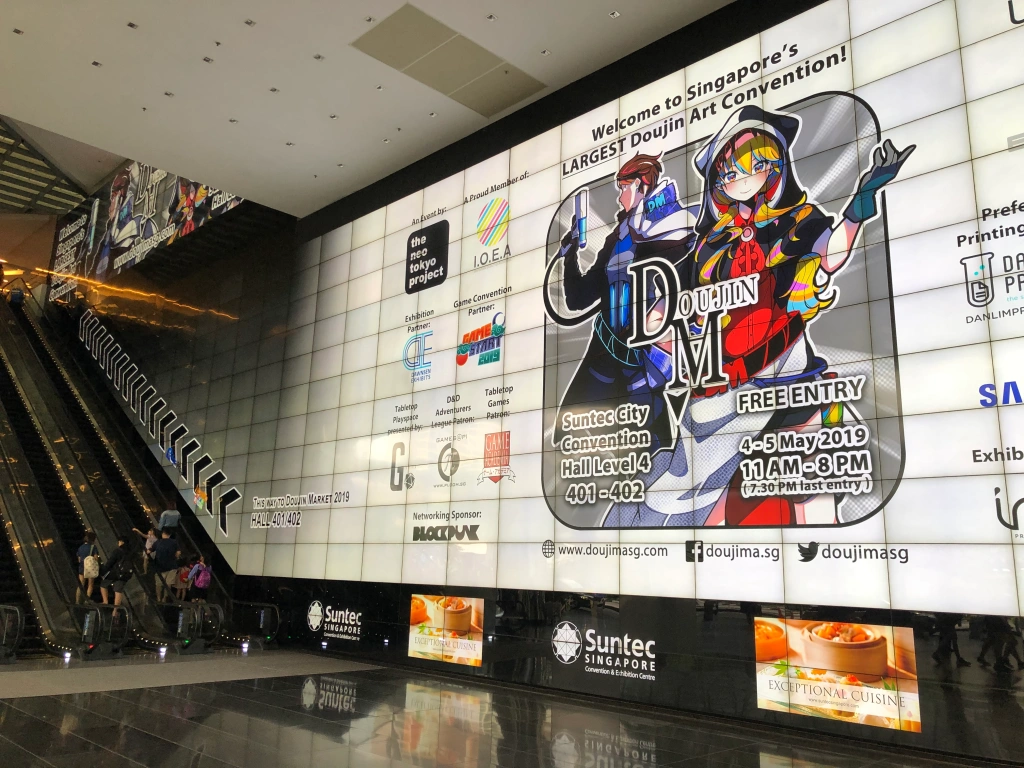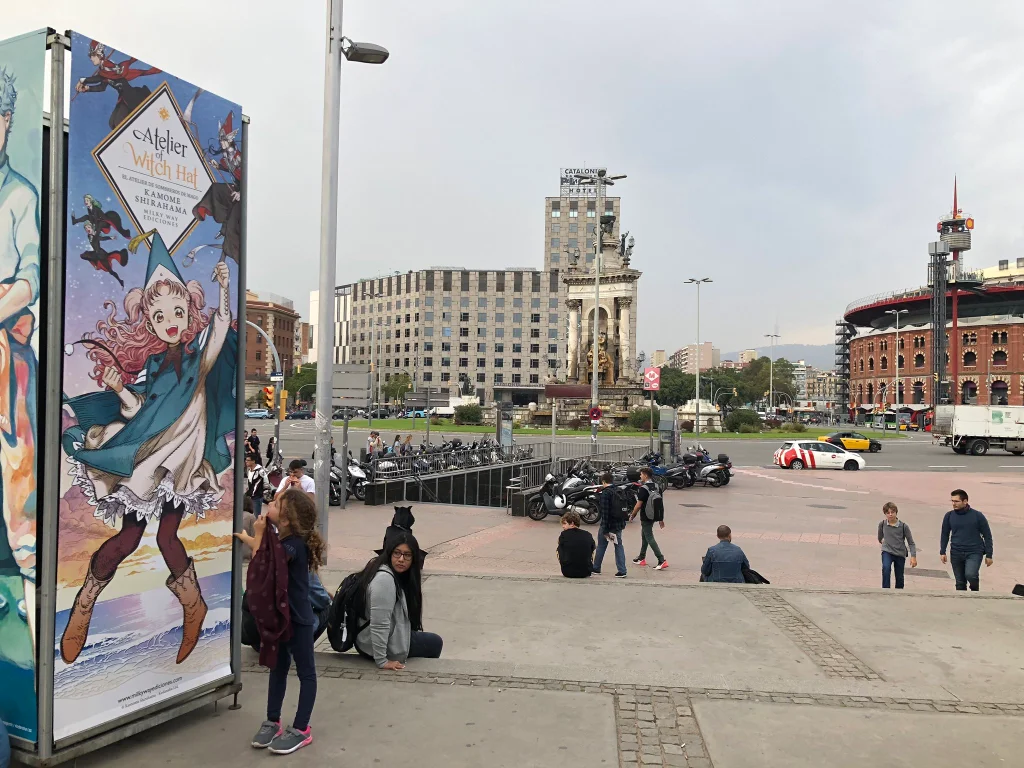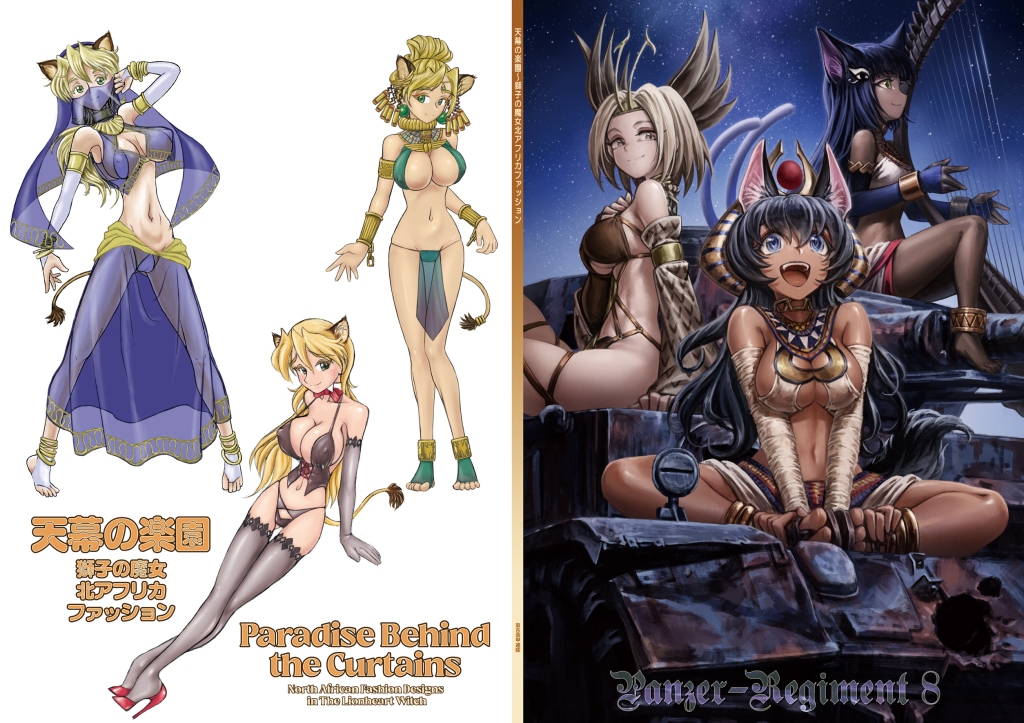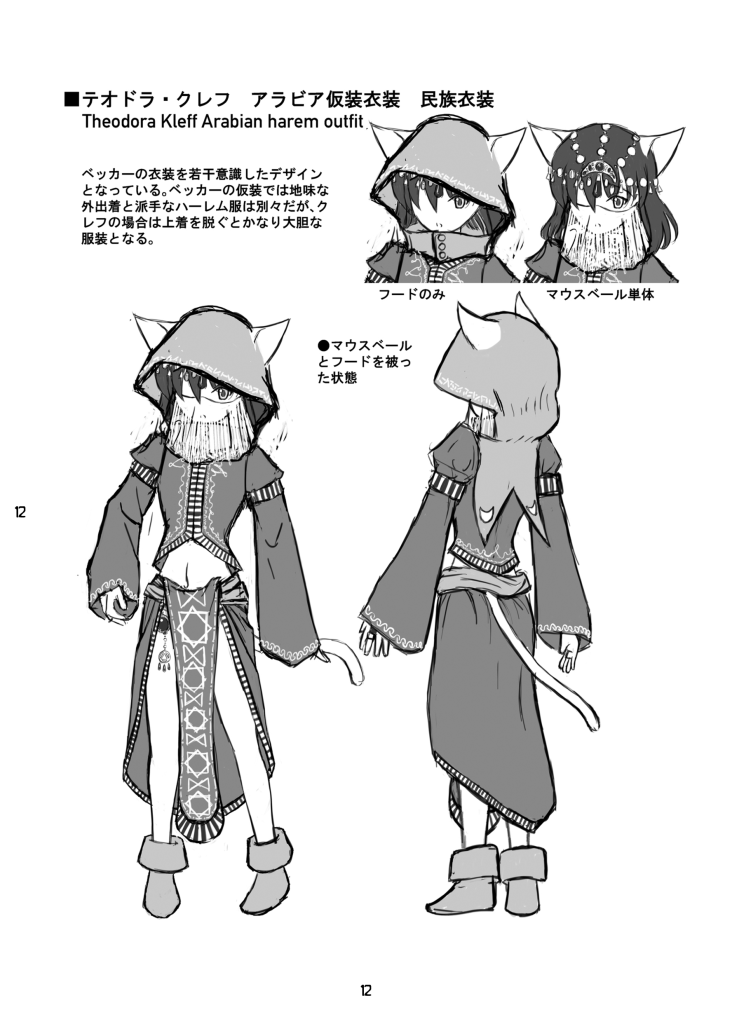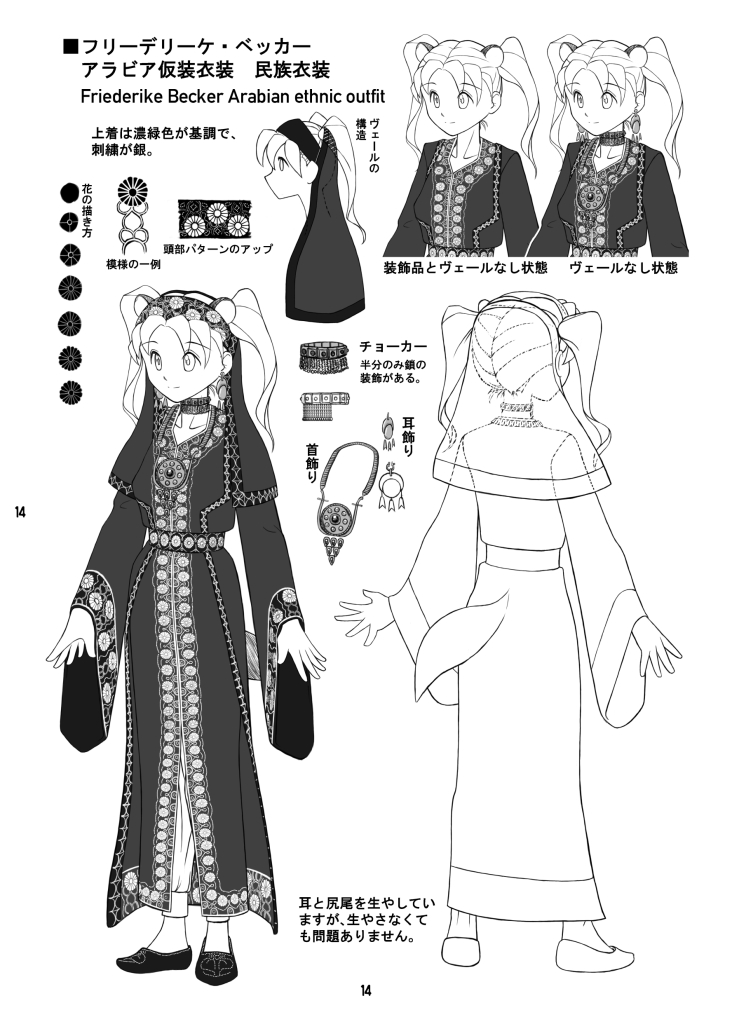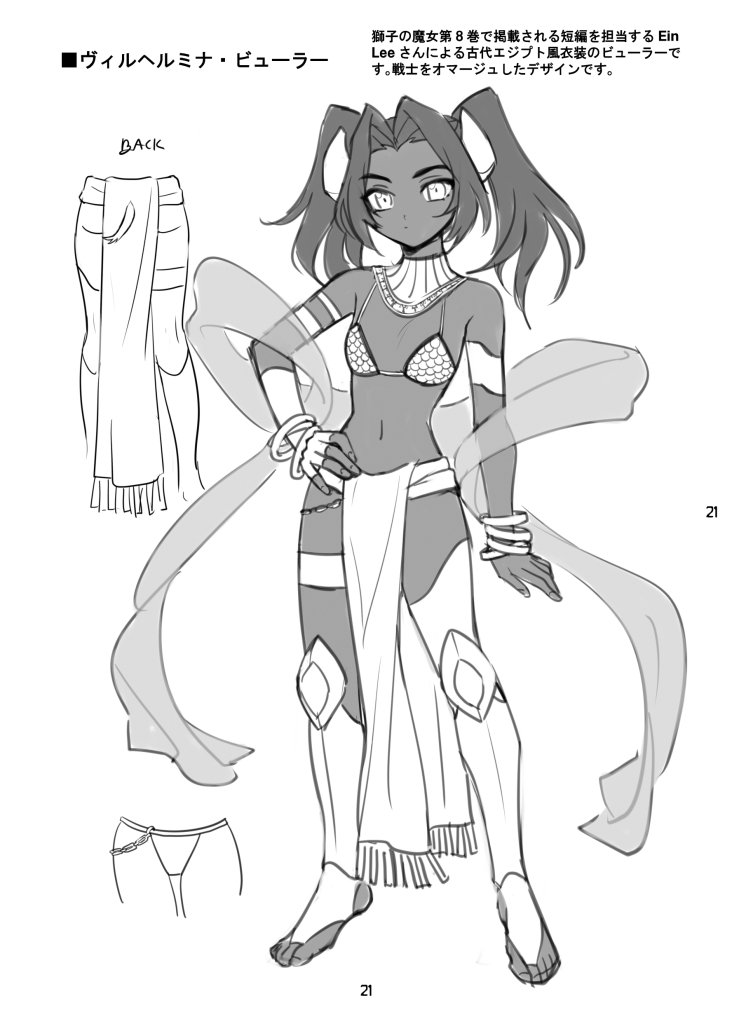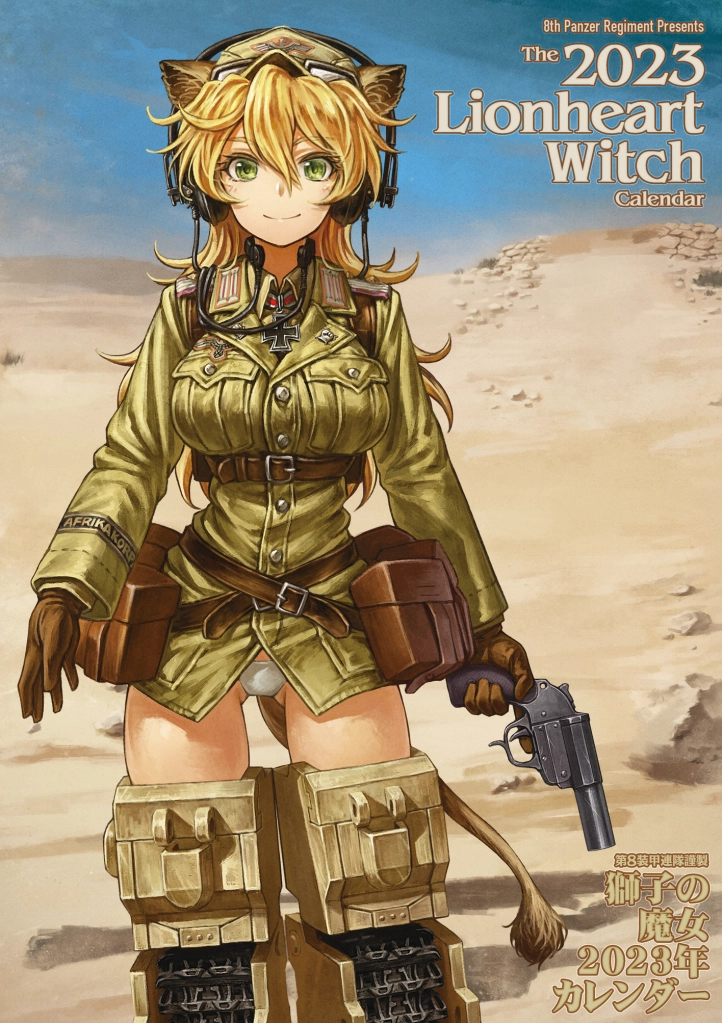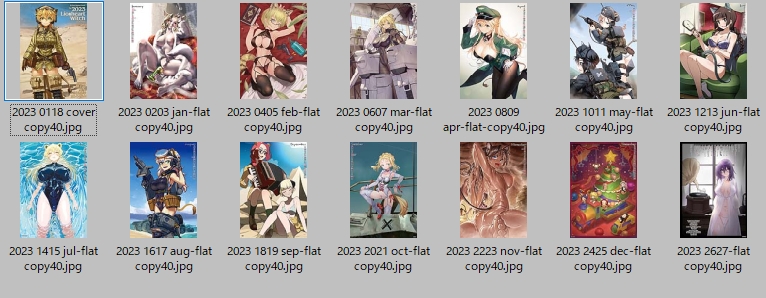もうすでに20年前の判決文です。しかしながらこれからも色々参考になるところがが多いと思います。
2002年のアシュクロフト対表現の自由連合裁判は色々な影響を残しましたが、実在しない未成年に対して実在する未成年と同じ保護を与えるのは表現の自由を歪めるという判断は画期的であり、なおかつ内心の自由なる古い権利を再確認する重要な判決だったと今なお思っています。
この翻訳は弁護士の山口貴士、兼光ダニエル真、enart(敬称略順不同)による共同作業でした。
原文はこちらで確認できます。
裁判については「アシュクロフト対表現の自由連合」で検索してください。
米合衆国連邦最高裁判所
No.00 -795
ジョン・D・アッシュクロフト司法長官およびその他の申立て人 対 表現の自由連合およびその外の者
2002年4月16日
法廷意見書
ケネディ判事は判決理由を申し渡した。
我々はこの訴訟において、1996年の児童ポルノ防止法(CPPA、合衆国法典タイトル18の2251条以下参照)が表現の自由を奪うものであるかを検討する。CPPAは、未成年者を描写しているように見えるが実在の児童(child)を使用せずに製作された性的に露骨な肖像(image)にまで、連邦法で禁止される児童ポルノの範囲を拡大している。法令は、特定の条件のもとにおいて、これら、未成年者のように見える成人を使用したり、コンピュータ画像処理技術(computer imaging)を使用したりして作られた肖像についても、その所持や頒布を禁じている。議会によれば、新しい技術は、実在しない児童の写実的(realistic)な肖像を作ることを可能としている。議会の答申、合衆国法典タイトル18の2251条に続く覚書参照。
Ferber判決(New York対 Ferber、458 U.S. 747頁 、1982年)は、児童を児童ポルノ製作過程での搾取から守るという国家の利益(公共の福祉)のため、他の性的に露骨な表現と児童ポルノとを区別したものであるが、実在の児童を描いていない児童ポルノを禁止することによって、CPPAはFerber判決が児童ポルノの規制を合憲とした判断の射程範囲を逸脱するものである。同上758頁参照。
一般論として、ポルノは猥褻な場合に限って禁止することが許されるが、Ferber判決は、未成年者が登場するポルノはその肖像についてMiller判決(Miller 対 California、413 U.S. 15頁、1973年)で定義される猥褻の基準への抵触を問題とすることなく、法律で禁止することを肯定している。Ferberは次のように認めている。「Millerの基準は、猥褻であるとして禁止されうるもののあらゆる一般的定義と同様に、児童の性的搾取を促進する者を訴追する国家の特別かつ切実な利益を反映しない。(458 U.S. 761頁)」
我々は次の問題について考証する機会が無かったが、性的行為を行う者の外見上の年齢は、その性的な描写が社会規範に反するかということと関係していると見なして良いと想定する。性的に露骨な行為を行う幼い児童の画像(picture)が猥褻とされるかも知れないのに対し、同様の行為をしていても、それが成人または年長の青少年のものである場合には猥褻とはされないかもしれないのである。しかしながら、CPPAは猥褻な表現を対象とするものではない。議会は、合衆国法典タイトル18の第1460条から1466条によって猥褻表現を禁止している。Ferber判決において問題とされた立法と同様に、CPPAは猥褻の範疇に属さない表現を規制しようとしており、またMillerの基準に適合しようとはしていない。例えば、CPPAによる規制は、例えそれらが充分な社会的価値を持っていたとしても、映画のような視覚的
表現にも及ぼされる。
それゆえ、解決されるべき主要な問題は、Miller判決の基準で猥褻と判断されるものでもなく、またFerber判決が規制を合憲とした児童ポルノでもない表現の世界を禁止しているCPPAの合憲性である。
1
1996年以前に、議会は児童ポルノをFerber判決で論じられている種類の描写、即ち実在する未成年者を使用して作られた肖像として定義していた(合衆国法典タイトル18の2252条、1994年版)。CPPAは合衆国法典タイトル18の2256条(8)(A)による禁止を維持しつつ、禁止されるべき表現の範疇として3つを加えている。その3つのうち、第1の2256条(8)(B)と第3の2256条(8)(D)について、この訴訟において合憲性が争われた。2256条(8)(B)は、「性的に露骨な行為を行う未成年者の、またはそのように見える」、「全ての写真、映画、ビデオ、絵(picture)、コンピュータの若しくはコンピュータによって作成された肖像又は絵を含む全ての視覚的描写」を禁止している。「全ての視覚的描写」に対する禁止は、どのようにしてその肖像が作られたかということに全く左右されない。この条項は、「バーチャル児童ポルノ」と時に呼ばれる範囲の描写を禁止しており、これはコンピュータで作成された肖像を含むものである。在来の方法で作られた肖像についても同様で、例えば、法令を文字どおりに読むと、「未成年者が性的に露骨な行為を行うように見える絵」である古代神話の一場面を描いたルネッサンス期の絵画(painting)までもが規制の対象に含まれる。また、CPPAは、例え子役を使って撮影されていなくとも、青年の役者が「実際のまたは擬似の(中略)性交(2256条(2))」行う未成年者に「見える」と陪審員が認定すれば、ハリウッド映画も禁止の対象とする。
これらの肖像は、その製作の過程において児童に被害を与えないどころか、そもそも児童が製作の過程に関与していない。しかし、議会はそれらの肖像がより直接的でない他の方法で児童を脅かすとした。小児性愛者達は、児童が性的行為に加わるように仕向けるために、それらの素材を使用するかもしれない。「成人との性的行為や、性的なきわどい写真のためにポーズを取ることに抵抗のある児童も、他の児童がそのような行為に参加して『楽しんでいる』描写を見せられることで、時に納得させられる場合がある。(議会の答申、合衆国法典タイトル18の2251条に続く覚書(3)参照)。さらに、小児性愛者はポルノ肖像によって「自身の性的欲求をそそられ」、「その結果として児童ポルノの製作と配布、そして実在の児童の性的虐待と搾取を増大させる」かもしれない。同覚書(4)、(10)(B)。 これらの理論的根拠の下では、被害は肖像の製作の方法からではなく、肖像の内容から生じるものとされる。それに加えて、議会はコンピュータで作成された肖像によって生じる別の問題を指摘した。これらの存在は実在の児童を使用しているポルノ業者を訴追することを難しくする。同覚書(6)(A)参照。議会は、画像処理技術が進めば、ある絵が実在の児童を使用して生産されたということを証明することがより難しくなるとしている。実在の未成年者を使用した児童ポルノを所持している被告が訴追を免れないようにするために、議会はバーチャル児童ポルノにまで禁止の範囲を広げた。
2256条(8)(C)は、バーチャルな肖像を作成するためのより一般的で程度の低い技術的手法を禁じている。この手法はコンピュータ・モーフィング(訳注:コラージュ)として知られる。ポルノ製作者達は、自ら肖像を作るよりむしろ、実在する児童の無垢な画像を、その児童が性的行為を行っているように見えるように改変することがある。モーフィングされた肖像はバーチャル児童ポルノの定義の範囲内に入ると言ってよいのであるが、実在する児童の人権と結びついており、その意味においてFerberの判決における肖像により近い。被上告人らはこの条項については違憲性を主張しておらず、我々もこの点については判断をしない。
被上告人らは2256条(8)(D)の違憲性を主張している。「のように見える」という条項の文のように、この条項の適用される範囲は極めて広い。2256条(8)(D)は児童ポルノを、「性的に露骨な行為を行う未成年」を描いている「との印象を伝えるような方法で広告、宣伝、上演、描写または頒布」された、あらゆる性的に露骨な肖像を含むと定義している。ある委員会報告では、この条項は、児童ポルノとして触れ込みをされた性的に露骨な肖像に向けられているとされている。上院報告.No.104-358、22頁(1996年)参照(この条項は、児童ポルノ製作者と小児性愛者が、児童ポルノとして触れ込みをされる露骨に性的な肖像の製作または頒布を通じ、児童の性や性的活動への好色的興味につけ込むことを妨げている)。しかし、この法令は触れ込み行為に関係していない所持者ですら罰するものであり、適用範囲はそのようには限定されていない。即ち、一度ある作品に対し児童ポルノというレッテルが貼られると、別の所持者の手に渡った場合にも表現自体に児童ポルノであるという属性が残り、例えその他の点ではいかがわしくない場合においてすら、その所持は違法となる。
被上告人である表現の自由連合その他は、CPPAがそのメンバーの活動を脅かすのを恐れ、California北部を管轄する連邦地方裁判所に提訴した。成人娯楽産業のCalifornia同業者組合である連合は次のように申し立てた。即ち、そのメンバーは、自身の性的に露骨な作品に未成年者を使用していないが、その素材のあるものがCPPAの拡大された児童ポルノの定義に含まれるかも知れないと信じている、と言うのである。他の被上告人は、ヌーディストの生活様式を擁護する本の発行者であるBold Type社、裸体画家であるJim Gingerich、官能的(erotic)肖像を専門としている写真家のRon Raffaelliである。被上告人達は、「のように見える」と「印象を与える」という規定が過度に広汎かつ曖昧であり、修正第1条による保護を受ける作品の製作を萎縮させると主張した。連邦地方裁判所はこれを認めず、政府に有利な略式判決を下した。裁判所は、「『ロミオとジュリエット』のような性的作品のいかなる改作も『禁制品』として扱われるということは『殆どありえそうもない』という理由で、規制範囲が過度に広汎であるが故に違憲無効であるとの主張を退けた。 App. to Pet. for Cert.62a-63a.
第9巡回控訴裁判所は連邦地方裁判所の判断を破棄した。 198F. 3d 1083頁(1999年)参照。 同裁判所は、表現が見る者に違法行為を行わせる可能性があるという理由で政府が表現を禁止することはできないとの判断を示した。裁判所は、猥褻でもなくFerber判決にあるような実在の児童を搾取して製作されたのでもない素材をCPPAが禁止しているため、これが実質的に過度に広汎であるとの判断を示した。Ferguson判事は、猥褻物や実在の児童を被写体とする児童ポルノと同様に、バーチャル児童ポルノが修正第1条によって守られない範疇の表現として扱われるべきだとの理由から、反対意見を唱えた。 198 F.3d、1097頁。同裁判所は、3人の判事の異議があるものの、再審理の申し立てを拒否することを全判事列席の上で票決した。220F.3d1113頁(2000年) 参照。
第9巡回控訴裁判所がCPPAを文面上無効としたのに対し、他の4つの控訴裁判所はCPPAの合憲性認めた。 以下参照。UnitedStates対 Fox、248 F.3d 394頁(CA5 2001年)、 United States 対Mento、231 F.3d 912頁(CA4 2000年)、 United States 対 Acheson、 195 F. 3d 645頁 (CA11 1999年)、United States 対 Hilton,167 F. 3d 61頁(CA1)、cert. denied、 528 U.S. 844頁(1999年)。我々は移送命令書を発布した。531 U.S.1124頁 (2001年)。
2
修正第1条は、議会は表現の自由を奪う法を作ることはできないと命じている。政府がこの命令に違反する態様としては様々なものが考えられるが (例えば、Rosenberger 対 Rector and Visitors of Univ. of Va.、515 U.S. 819頁(1995年)、Keller 対 State Bar of Cal. 496 U.S. 1頁(1990年))、修正第1条により保護された表現に対し刑事罰を課す法を制定することは、表現抑圧の厳しい例である。CPPAの罰則は実に厳しい。初犯者であっても最高15年間投獄される可能性がある。2252A条(b)(1)。常習犯は最低でも5年以上、最高30年以下の懲役に処せられる。同上。軽い刑罰を科することによってさえ本来保護される表現を萎縮させることは十分に可能であるが(Wooley 対 Maynard、430 U.S. 705頁(1977年) 参照)、本件は、我々がなぜ表現の自由を制約する法令そのものの違憲性を正面から争うことを認めているのか、ということを説明するための模範的事例である。これらの厳しい刑罰をちらつかされた場合、この法により規制され、あるいは規制される可能性のある肖像を敢えて配布して規制の合憲性を問おうとする舞台や映画のプロデューサーや、本の発行者などの表現者は殆どいないであろう。憲法は、修正第1条の保障する広大で特別扱いの範囲の表現までも萎縮させる、規制対象の広範な法律を認めないことにより、表現の自由に対し重要な保護を与えている。この原則の下では、CPPAが仮に一定限度を超えて、保護された表現までも禁止するものと認められれば、憲法違反となる。 Broadrick 対 Oklahoma、413 U.S. 601、612頁(1973年)参照。
児童に対する性的虐待は重罪であり、正常な人々の道徳的本能に嫌悪感をもたらす行動である。立法事実によれば、児童への不法な欲望を心に抱いていたり、衝動を満足するために犯罪行為を行ったりする人々が存在する。議会の答申、2251条に続く覚書(3)参照。また「1999年の児童虐待(合衆国保健社会福祉省児童青少年家庭局)」 参照(1999年に93000人が性的虐待の被害者となったと推定している)。議会はまた、これらの中核となる犯罪者の周辺には、興味半分にこれらの衝動を刺激し、そして写真、及び児童との性的行為を報告する文書の商取引を行う者がるとしている。議会は憲法に違反することなく児童を虐待から法律を成立させることができ、また実際にそうしている(例えば合衆国法典タイトル18の2241条と2251条)。しかし、犯罪につながる可能性それ自体は、憲法上保護されるべき表現を規制することを正当化するものではない。Kingsley Int’l Pictures Corp.対Regents of Univ. of N.Y.、360 U.S. 684、689頁 (1959年)参照(「自由な人々の間では、犯罪を妨げるために適用される抑止力は教育と刑罰であり、表現に対する規制ではない」、内部の引用符と引用文は省略した)。また、我々の感情を害するという理由で表現を禁止してはいけないということも確立されている。FCC 対 Pacifica Foundation、438 U.S. 726、745頁(1978年) 参照(「 社会が特定の表現を不快なものとして受けとめ
るということは、表現を規制する理由とはなりえない」)。以下参照。Reno 対 American Civil Liberties Union、521 U.S. 844、874頁(1997年)(「成人の表現の自由について判断するに際し、『猥褻とは言えない下品な性的表現は修正第1条によって保護される』ことを我々は完全に明らかにした」、Sable Communications of Cal., Inc. 対 FCC、492 U.S. 115、126頁(1989年)を引用)、Carey 対 Population Services Int’l、431 U.S. 678、701頁(1977年)(「保護された表現が誰かを不快にするということは、表現の規制を正当化するものではない」)。
一般的原則として、修正第1条は、我々が見たり、読んだり、話したり、聞いたりすることを政府が決定することを禁止している。表現の自由には限界もある。名誉毀損、扇動、猥褻物、そして実在する児童を使ったポルノなど、一定の範疇に属する表現は表現の自由の保障の対象外である。Simon & Schuster, Inc. 対 Members of N.Y. State Crime Victims Bd.、502 U.S. 105、127頁(1991年)(ケネディ判事による判決同意の意見書)参照。これらの範疇に属する表現は修正第1条に違反することなく禁止することが可能であるが、CPPAによって禁止されている表現はこれらの範疇には含まれない。第9巡回控訴裁判所の判決の反対意見において、Ferguson判事は、保護されない表現の範疇の中に「バーチャル児童ポルノ」という項目を追加すべきであると提案している。198 F. 3d, 110頁参照。連邦最高裁判所がCPPAを合憲と判断するためには、保護されない表現の範疇の中に「バーチャル児童ポルノ」という項目を追加することが肯定されることが必要となるだろう。
我々が指摘したように、CPPAは既存の連邦法によるの猥褻規制の範囲を単に拡大するものではない。Miller判決(Miller対California、413 U.S. 15頁、1973年)の下では、政府は、作品が全体として好色的興味に訴えており、社会通念上明らかに不快なものである上に、真面目な文学的、芸術的、政治的又は科学的な価値を欠いたものであることを証明しなければならない。同上24頁。しかし、CPPAはMiller判決の示した猥褻性に関する基準を無視し、性的に露骨な行為を行う未成年者を描いているように見える肖像一般に規制の範囲を広げている。規制される表現が好色的興味に訴えている必要はない。性的に露骨な行為の描写は、たとえそれがどのような形式のものであろうとも禁止される。CPPAは心理学の手引書にある絵や、映画の性的虐待の恐怖を描いた箇所にまで適用される。その上、その肖像が明らかに不快であることすらも要しない。17歳の者が性的に露骨な行為を行っているように見える絵は、常に地域の社会通念上不快なものとされるわけではない。
CPPAは、真面目な文学的、芸術的、政治的又は科学的価値があるか否かを問わず、その表現を禁止している。10代の者が性行為を行っていることは現代社会における事実であり、時代を通じて芸術や文化のテーマとされてきたが、CPPAは未成年者が性行為を行っているという概念を視覚的に表現することを禁止している。CPPAの下では、描かれた者が18歳未満に見えさえすれば、その肖像は禁止される。合衆国法典タイトル18の2256条(1)。 これは人が性的関係を持つことができる年齢のみならず、多くの州の婚姻可能年齢よりも高い。以下参照。2243条(a)(合衆国の主権の及ぶ海上や連邦政府直轄地における性交可能年齢は16歳である)、「州法に関する合衆国内調査(R. Leiter編、第3版、1999年、384-388頁、)」(48州で親の同意の下16歳で結婚が許可される)、「セクシャリティ、ジェンダー、法(W. Eskridge、N. Hunter共著、1997年、1021-1022頁)」(39州とコロンビア特別区では、性交可能年齢は16歳かそれより低い)。 もちろん、若者達が、自発的にあるいは性的虐待の被害者として、法定年齢以前に性行為をすることがありえることは否定できない。
児童による性行為と児童への性的虐待という2つのテーマは、無数の文学作品を生み出してきた。ウィリアム・シェイクスピアは、片方はたった13歳という、最も有名な10代の恋人達を創造した。 Romeo and Julietの第1幕第2場の9行目参照 (「娘
は14にすらなっておりません」)。 劇の中で、シェイクスピアはその関係をすばらしくそして無邪気な、しかし未成熟ではないものとして描いている。その作品は少なくとも40回は映画化されており、10代の少年少女が彼らの関係を性交によって完全なものとしたことを暗示している(例えば、Romeo and Juliet、B. Luhrmann監督、1996年)。 シェイクスピアは、エリザベス朝時代の観客に向けて露骨に性的な場面を描かなかったかも知れない。現代の監督はより月並みでないアプローチを採用しているが、そのこと自体をもって作品が猥褻なものであるという結論を導くことはできない。
現代の映画は類似のテーマを追い求めている。昨年のアカデミー作品賞にノミネートされた映画にTrafficがある。Predictable and Less So, the Academy Award Contenders, N.Y. Times,Feb. 14, 2001, p. E11参照。その映画は麻薬におぼれていく10代の少女-16歳とされている-を描いている。視聴者は、彼女が麻薬常用により堕落し、最後には彼女が不潔な部屋で麻薬のためにセックスをするようになるのを見る。また、一昨年にはAmerican Beauty がアカデミー作品賞を受賞した。 “American Beauty” Tops the Oscars, N.Y. Times, Mar.27, 2000, p.E1.参照。その映画の中では、10代の少女が彼女の10代のボーイフレンドと性的関係を結び、そして別の少女は中年の男性を性的に喜ばせることに身を委ねている。この映画はまた、観客の目から見れば性的な行為が実際には行われていないと理解することができるものの、ある登場人物が自分は10代の少年が年上の男性と性行為を行っているのを見ていると信じる場面を含んでいる。
我々の社会では、他の文化と同様に、若者の運命や生き方に共感や普遍的な魅力を感じる。芸術や文学は、我々が皆かつて経験した青春の人格形成期、我々がかつて知っていたように、傷つき易く、失望するときは深く、悲劇的に選択を誤ったりするが、また、道徳的な行動や自己達成にも手が届く範囲にある時期への関心を表現する。我々が言及している映画がCPPAに違反しようとしまいと、これらの作品はCPPAによる広範な規制の対象とされているテーマを深く掘り下げるものである。もし、これらの映画や、他の数百のより注目度の劣る映画が、CPPAの禁止する視覚的表現を1コマでも含んでいると、その映画の所持者は、作品の価値について踏み込むまでもなく、当然に厳しい罰則を課せられることになる。これは、「作品の芸術的価値は、たった1つのきわどいシーンの存在に左右されない」という修正第1条の重要な原則と矛盾するものである。Book named “John Cleland’s Memoirs of a Woman of Pleasure” 対 Attorney General of mass.、 383 U.S. 413、 419 頁(1966年) 参照(「本の社会的価値は、好色的な訴えや明らかな不愉快さによって失われたり、消滅することはない」、多数意見)。修正第1条はMiller判決の下で、猥褻と思われる作品の欠点を補うべき価値の存在について、作品を全体として考慮して判断することを要求している。例えば、猥褻と思われる場面が物語の流れの一部を構成する場合、その場面だけを取り出してみれば不快なものであったとしても、その作品自体が猥褻なものとはならない。 Kois 対 Wilsconsin、408 U.S. 229、231頁(1972年、無記名判決)参照。以上のような理由により、CPPAは、その規制の態様と猥褻の定義から導かれる社会通念への挑戦との間に関連性を欠くという理由で、猥褻を禁止するものとして読むことはできない。
政府は、上記したようなCPPAの欠陥を解決するために、CPPAによって禁止される表現は、その価値を検討することなく禁止することが許される児童ポルノと殆ど区別できないことを主張している。New York 対 Ferber、458 U.S. 761頁参照。Ferber判決は、肖像が児童への性的虐待の産物である時は、国家がその内容について検討すること無しに排除することが公共の福祉に合致するとの判断をしている。同上761頁の脚注12。また同上775頁参照(「草案では、ニューヨークの法令は特定の概念の伝達までも規制しようとしていない」、オコーナー判事による判決同意の意見書)。(訳注:Ferber判決において問題とされた法令は)作品の内容ではなく、作品の製作そのものを規制しようとするものであった。製作に関与した児童の人権が侵害される場合、その作品に文学的、芸術的その他の価値を含んでいるということは、人権侵害を正当化する抗弁とはなりえない。「性的な表現を社会がどこまで 許容することが出来るのかという問題と、児童を性的搾取から保護することを目的とした立法の射程範囲について、同じレベルで扱おうとすること自体非現実的なのである(同上761頁、脚注12)。」
児童ポルノの製作と同様に、その販売と頒布の禁止をFerber判決は合憲とした。なぜなら、これらの行為は2つの観点から子供の性的虐待と「本質的に同視することが許される」からである。同上759頁。まず、児童ポルノとは児童虐待の恒久的な記録であり、その被写体となった児童はその流通のたびに人権を侵害されることになる。名誉を毀損する文章と同じく、その表現が新たに発行されるたびに子供の評判と精神の安寧が新たに傷つけられる。同上759頁、脚注10参照。次に、児童ポルノの売買はその製作の経済的動機であるので、その頒布ネットワークを遮断することは公共の福祉に適合するものであった。「唯一の現実的な方法ではないとしても、その製品を売ったり、広告したり、他の宣伝をしたりすることに対して厳しい刑罰を科し、それによって児童ポルノ市場を干上がらせることが最も迅速な手段だと考えられる。」、同上760頁。いずれの判断においても、その表現はそれを生み出した犯罪と直接の関連性があると裁判所が判断したものであった。
後に、Osborne 判決(Osborne 対 Ohio, 495 U.S. 103頁、1990年) において、児童ポルノの製作、販売、広告の禁止を正当化したものと同様の公共の福祉の観点から、裁判所は実在の児童を使ったポルノの所持を禁止することを正当化した。「児童ポルノの犠牲者の保護という公共の福祉の重要性に鑑みて」、国家が「児童ポルノの流通過程の全ての段階においてこの悪徳を根絶しようとすること」を正当化した。同上110頁。またOsborne判決は、児童ポルノが未成年者をそそのかす目的で使われているということを妨げるという公共の福祉についても言及した。同上111頁。しかしながら、裁判所は、児童ポルノの被害者とされる児童ポルノの撮影に関与した児童への配慮をその判決の根拠とした。同上110頁。 この配慮を無くしては、政府による別の関心が規制を正当化しうるものとはしていない。13-15頁、下を参照。
Ferber判決において問題とされる表現がそれ自体で性的虐待の記録であるのとは対照的に、CPPAが規制の対象とする表現は必ずしも犯罪を記録したものでもなく、その製作の際に被害者が生じない表現までもが禁止される。Ferber判決において問題とされた表現とは異なり、バーチャル児童ポルノは児童の性的虐待と「本質的な関連性」を有するものではない。458 U.S 759頁。政府はその肖像が現実の性的虐待を導きかねないことを主張するが(13-16頁、infra参照)、その因果関係は不確定かつ間接的なものである。現実の児童の性的虐待という被害は、その表現から必然的に起こるのではなく、その後に生じた数量化しない潜在的な要因に依るものである。
児童ポルノは滅多に価値のある表現にならないとFerber判決が認めている以上、これらの間接的な被害の可能性をもってバーチャル児童ポルノに対する規制を正当化するには十分であると政府は主張する。458 U.S. 762頁参照(「少数のものを除いて、子供が淫らな性的行為行う実演や写真を許可することの価値は非常に僅かなものである」)。しかし、この論拠には2つの弱点がある。まず、児童ポルノについてのFerber判決の判断は、その製作の過程に着目したものであり、その内容に着目したものではない。同判決は、表現が猥褻でも性的虐待の産物でもないとき、修正第1条の保護の範囲外にはならないことを再確認するものである。同上764-765頁(「性行為の記述やその他の性的描写の頒布については、他の点では猥褻でなければ、そして実演または写真等による実演の映像複製物を含んでいない限り、修正第1条の保護が及ぶ」)。
政府による主張の第二の弱点は、Ferber判決は、価値の無いものだという点を児童ポルノの定義の内容とはしていない、という点である。むしろ、裁判所はこの範疇の作品に重要な価値を持つものがあることを認め(同上761頁参照)、バーチャルな肖像-CPPAによって禁止されているようなもの-によって表現されているものは、当該テーマを表現するための選択肢の一つであり、許された表現の方法であるとしている。仮に文学や芸術の価値の観点から作品に必要だと考えるならば、表現者は法律の定める年齢以上の若く見られる人間を使うことができる。法令による禁止範囲から外れるシミュレーションは別の選択肢を与える」、同上763頁。Ferber判決は実在(actual)と仮想(virtual)の児童ポルノの違いについて単に言及するだけではなく、その判決を支える根拠としている。児童ポルノとバーチャル児童ポルノを区別せず取り扱い、また実在の児童を使用しない代替物をも犯罪とするCPPAに対し、Ferber判決はいかなる合憲性の裏付を与えるものでもない。
3
我々が調べたところでは、CPPAはMiller判決の定立した合憲であるための基準に違反し、また、Ferber判決によりその合憲性を支持されるものでもない。政府は、小児性愛者が児童を誘惑するためにバーチャル児童ポルノを使用するかもしれないからCPPAが必要であると主張し、Miller判決やFerber判決とは異なる別の理屈によりその禁止を正当化することを求めている。しかし、漫画、ビデオゲームやキャンディーのように、それ自身が無害であるにもかかわらず、不道徳な目的に使われうるものは多くあるが、それらが誤用されうるからといって、我々はこれらのものを禁制品とするべきとは考えてはいない。無論、政府は児童に不適切な素材を供給する成人を処罰することは許されるし(Ginsberg 対 NewYork、390 U.S. 629頁、1968年) 、児童を不法に誘惑する行為に対し刑罰を課しても良い。しかし、成人が受領する権利を持つ表現を、児童にそれを受領させないようにするために、完全に禁止することは許されない。Sable Communications of Cal., Innc. 対 FCC、492 U.S. 115頁(1989年)参照。Butler判決( Butler 対 Michigan,352 U.S. 380、381頁、1957年)において 、当裁判所は、「未成年者の暴力的、堕落的、非道徳的な行為を誘発する」傾向があることを理由に下品な出版物の発行を禁止する法令を、違憲無効とした。裁判所は、裁判官の全員一致で、国家が「成人に児童向けの発行物のみを読ませるようにする」ことはできないという、修正第1条から導き出される重要な原則を確立した(同上383頁)。我々はこの判断を再確認した。 United States
対 Playboy Entertainment Group, Inc.、529 U.S. 803、814頁(2000年)(『児童の利益を守るという公共の福祉の目的を達成のための、より制約的でない手段が存在する場合には、包括的な表現規制を正当化することはできない』)、Reno 対 American Civil Liberties Union、 521 U.S. 875頁(「有害な表現から児童を守るという公共の福祉は、不必要に広範な表現規制を正当化するには十分ではない」)、Sable Communication 対 FCC, 13-131頁、supra(”dial-a-porn”メッセージに対する規制が「成人向け電話の会話内容を児童に適したものへと制限しているのは無効である」との理由から、違憲であるとした)。
政府は、その内容から児童を守るのではなく、他の犯罪を犯す人間から児童を守るためという理由で表現を規制しようとしている。しかし、政府が成人向けの表現を、それを児童が受領するかもしれないという理由だけで禁止することはできない、という原則は同様に適用される。問題の罪悪は、行為者の不法な行為に由来するものであり、そもそも問題とされる表現とは関係なく、その行為は独自に犯罪と定義されるべきものである。このことにより、表現規制の射程範囲は限定されたものではないことが基礎付けられる。表現を制約する目的は不法行為の禁止にあるが、結果的に成人が合法的に享受しうるべき表現までも規制することにより、その目的達成のために必要最小限の制約の範囲を超えてしまう。
政府はさらに、バーチャル児童ポルノは小児性愛者の性欲をそそり、彼らを不法な行為に従事するよう促す、との意見を提出した。この論理的根拠は問題の条項を正当と認めるに足りるものではない。不法な行為を促しかねないという表現の傾向だけでは、それを禁止するのに十分な理由ではない。政府は、「民衆の私的な考えをコントロールすることが望ましい、ということを法律制定の理由とすることは憲法上できない」、Stanley 対 Georgia、394 U.S. 557、566頁(1969年)。
政府が思想をコントロールしようとしたり、容認しがたい目的の法を正当化しようとするとき、修正第1条の保障する自由は最も危機に陥る。考える権利は自由の基本であり、表現は思考の始まりであるが故に、政府による規制から守られなければならない。
これらの自由を保護し、また表現の自由それ自体を守るため、当裁判所の修正第1条を巡る裁判例においては、言葉と行為、考えと行為の間には大きな違いがあるという線引きをはっきりさせている。Kingsley Int’l Pictures Corp., 360 U.S. 689頁参照。また、Bartnicki 対Vopper、532 U.S. 514、529頁(2001年)参照(「不法な行為をやめさせる普通の方法は、その行為をする者に適切な罰を科すことである」)。政府は、「いつかはっきりしない時期に」不法な行為が行われる可能性が増えるという理由により、表現を禁止してはいけない。 Hess 対 Indiana、414 U.S. 105、108頁(1973年、無記名判決)。 法令違反や暴力の使用を呼びかける表現を規制することが政府に許されるのは、その表現行為が直ちに違法な行為を誘発し、あるいは惹起する目的であり、かつ、そのような行為を誘発する危険性が高いときに限られる。Brandenburg 対 Ohio、395 U.S. 444、447頁(1969年、無記名判決)。 ここには企ても扇動も教唆も共謀もない。政府は、考えや衝動を促す表現と児童虐待の結果との間の間接的な関連性しか主張していない。より直接的かつ明確な関連性を主張すること無くして、小児性愛者の不法行為が誘発されるかもしれないという理由により、政府が表現を規制することは許されない。
政府は次に、市場から実在の児童を使用したポルノを除去するために、バーチャルな肖像も同様に禁止する必要があると主張する。バーチャルな肖像は、政府の主張によれば、実在の児童を使用した物と見分けがつかないものであり、それらは同じ市場において、同じ価値を有するものとしてしばしば交換されている。この点でバーチャルな肖像は、実在の児童の搾取によって製作された作品の取引を促進するものであると主張されている。その仮説は俄かに信じがたいものである。仮にバーチャルな肖像が違法の児童ポルノと寸分違わないのだとすれば、実在の児童を用いた肖像は区別ができない代用品の流通により市場から駆逐されるであろう。もしコンピュータで作成された虚構の(fictional)肖像によって実在の児童を使用したものと同様の利益を得ることが出来るのであれば、実在の児童を虐待することによって訴追される危険を冒すポルノ製作者はほとんどいなくなるだろう。
Ferber判決によって規制が正当化される表現の場合には、表現の作成行為それ自体が、児童虐待の犯罪であり、表現行為の禁止は利益目的を除去することによって犯罪をやめさせる効果を有する。Osborne判決、495 U.S. 109-110頁参照. ただし、表現の背後に犯罪が隠れている全ての場合について、当裁判所は表現の規制を許しているわけではない。 例えばBartnicki判決、supra、529頁(市場の形成を阻害するという目的は、違法に受信された表現をラジオコメンテーターが伝えること自体を禁止をすることを正当化しない)。 我々はこの事案について、隠れた犯罪という物が存在しないため、表現の自由と公共の福祉との間の調整を考える必要はない。例え、政府の児童ポルノ市場の形成を抑止するという議論がある文脈の中で説得性を持ったとしても、この法令は正当化されないだろう。
最後に政府は、コンピュータ画像処理を用いた肖像製作の可能性が、実在の児童を使ったポルノの製作者を訴追することをとても困難にすると主張する。専門家でさえも、絵が実在の児童を被写体としたものか、コンピュータ画像処理によって作られたものかどうかを述べることは難しい、と我々は伝えられている。その議論では、立証の困難性を解消するために必要な解決方法は、実在の児童を被写体としたものだけではなくコンピュータ画像処理で製作された肖像をも禁止することだとしている。その議論は事実上、憲法上保護されていない表現を禁止するための手段として、憲法上保護されるべき表現を禁止することが許されるとしている。この分析は、修正第1条について、原則と例外を逆転させてしまうものである。
政府は、不法な表現を抑圧する手段として合法な表現を抑圧してはならない。保護されるべき表現は、ただ保護されていない表現に似ていると言うだけで保護されない表現に転じるものではない。憲法はその逆を要求している。「保護されていない表現が罰せられないために社会に起こりうる危険よりも、保護された表現が沈黙する可能性のほうが、より重要なのである」、Broadrick 対 Oklahoma、413 U.S. 612頁。過度の広汎性故に無効の原則は、もし保護されていない表現を禁止する結果として、相当な量の保護される表現が禁止されたり、その表現の自由が脅かされたりする場合には、政府が保護されていない表現を禁止することを許さない。
かかる理由に基づく異議を避けるために、政府はCPPAを、表現の自由を制約する条項としてではなく、表現が合法であることの証明責任を被告人に転換させる条項として我々に読ませようとした。この点に関しては、政府は、素材が成人のみを使って作られており、実在の児童を描写したという印象を伝えていないことを立証することは、有罪判決を避けるための積極的抗弁となると述べている。合衆国法典タイトル2252 条A(c)参照。
政府は、被告に自らの表現が非合法でないことを証明する責任を課そうとすることによって、深刻な憲法上の困難を提起している。積極的抗弁は訴追されない限り可能ではなく、被告人は、立証に失敗した場合は重罪について有罪判決を受ける覚悟をして、自己の行為が積極的抗弁の範囲内となることを証明しなくてはならない。CPPAの下において裁かれる場合、反証責任は重いものである。被告人自身が作品の製作者ではないとき、彼には被写体となっている行為者を特定することは勿論、その実在性さえも証明する方法がないだろう。もし立証の困難性が政府にとって深刻な問題であれば、無実の所持者にはとっては少なくとも同程度に困難になることは明白である。さらに、CPPAは1996年以前に製作された作品にも適用され、その結果として、製作者自身も立証責任を果たすには十分なその製作の記録を保存していない場合がある。抗弁の証明に失敗した場合、重罪について有罪宣告を受けることとなりかねない。
しかし、我々は、政府がかかる立証責任を表現者に課すことの是非について決める必要はない。例え積極的抗弁の存在が法令を修正第1条に違反しないものとして救済することができたとしても、設定されている積極的抗弁は不完全であり、不十分である。その製作について児童が関与していないことを立証しえたとしても、有罪判決を免れ得ない場合が存在するのである。所持について訴追された被告人は、その頒布行為について訴追された場合とは異なり、当該フィルムには成人の役者しか出演していないことを立証したとしても、それは有効な抗弁とはなりえないのである。頒布について訴追された映画製作者は、頒布の訴因については処罰を免れる一方で、同じ映画製作者及びその流通に関与する全ての者は、所持の訴因について訴追される可能性があるのである。さらに言えば、積極的抗弁の存在は、コンピュータ画像処理によって、又は未成年者に見える成人の役者を用いない他の手段によって表現を製作する者を保護しない。同上参照。これらの事案では、肖像を製作する際に児童を傷つけていないことを被告人は証明することができるが、かかる積極的抗弁は被告人が有罪判決を受けることを妨げるものではない。この理由により、積極的抗弁の存在は、実在の児童を使用して製作された肖像とバーチャルなものを区別することが出来ないという政府の主張する表現規制の根拠と無関係な相当な量の表現を保護しないものであるから、積極的抗弁の存在はCPPAの合憲性を基礎付ける根拠とはなりえない。
要するに、2256条(8)(B)はFerber判決とMiller判決で規制を認容される範疇に属さない表現をも規制対象とするものであり、その規制を正当化する根拠として政府が主張するものは、当裁判所の判例及び修正第1条により正当化されるものではない。この条項は、かなりの量の本来合法とされるべき表現を削減するものである。この理由によって、2256条(8)(B)は規制範囲が過度に広汎なものであり、違憲である。
4
被上告人は同様に2256条(8)(D)の違憲性を主張している。この条項は、性的に露骨な行為の描写について、「素材が性的に露骨な行為を行う未成年者の視覚的描写であるか又はそれを含むとの印象を伝えるような方法で、広告、宣伝、上演、描写又は配布されたもの」を禁止している。上告人、被上告人の双方はこの条項を児童ポルノに見える素材を禁止する条項とほとんど同一の物として扱っている。政府の見解によると、その2つの条項の違いは「『印象を伝える』条項が、その素材がどのように売り込まれているかについて照し合わせて考慮・評価することを陪審員団に対して要求する」点にある(Brief for Petitioners、18頁、脚注3)。 しかしながら政府は、それでもなお陪審員の判断が主として禁止される作品の内容に基づくであろうと想定している。
我々はこの見解に異議を唱える。CPPAは、未成年者を描写しているという「印象を伝える」性的に露骨な素材を禁止している。その文言は2256条(8)(B)における「のように見える」ものの禁止のように思えるかもしれないが、それは肖像の内容に関する判断を殆ど要求していない。2256条(8)(D)の下では、作品は性的に露骨なものでなければならないが、その他の点では内容を問題とされない。映画は、未成年者を関与させる性的に露骨な場面を含んでいなくても、もしタイトルと予告編がその映画にそのような場面があるという印象を伝えていれば、児童ポルノとして扱われる。犯罪成立の判断は表現がどのように呈示されているかにより決定され、描写の内容では決まらない。立法者による立法趣旨は児童ポルノのように見える素材の問題点について詳細な検討を加えているが、単に児童ポルノであるとして視聴者に触れ込まれる肖像のもたらす害悪について何も触れていない。
政府は、この条項の合憲性を支持するに足りる真剣に取り組むべき抗弁を提出していないし、CPPAを支持する他の議論は2256条(8)(D)の合憲性を支持する役には立たない。これらの素材は、例えば刑事裁判において、実在の児童が関与した児童ポルノとの区別が困難なわけではない。当裁判所は、ある素材を猥褻かどうか判断する際には、触れ込みをする行為の存在が事実認定の根拠となりえるものであると認定した。Ginzburg 対 United States、383 U.S. 463、474頁(1966年)参照(「判断の微妙な事案においては、触れ込み行為を裏付ける証拠の存在が、問題となる表現物の判断に際して有力な判断材料となり、その結果として猥褻性テストの基準を満たすものという判断を導くかもしれない」)。 被告人が「単に好色的な訴えかけのために性愛本の商業的頒布(同上466頁)」に関与している時、彼または彼女がその作品を製作した状況は表現物の猥褻性の判定に重大な関連性を有するであろう。
しかしながら、2256条(8)(D)はGinzburg判決の射程範囲外にある相当量の表現を禁止している。この条項により禁止される範囲内に属する表現物は、それがどのように市場に出され、販売され又は描写されたかについて、受領者に何の責任も無い場合においても、その者の手中で汚名を着せられ、違法である。さらに法令は、その宣伝状態などが「商業的利用」の試みの一環であることを要求していない(同上)。結果として、CPPAは児童ポルノの触れ込みを禁止する以上のものとなっている。それは、流通の初期段階において児童ポルノとして説明又は触れ込みをされた作品の所持を禁止するものである。該当条項は、未成年の役者が出演していない性的に露骨な映画について、未成年者が出演していることを想起させる箱に収められているということを理由として、これを禁制品とするものである。その映画に児童が出演していないことを所持者が知っている時でさえ、所持は犯罪とされる。より厳密な規制を修正第1条は要求している。この理由により、2256条(8)(D)は、実質上過度に広汎な表現を規制するという理由により違憲である。
5
以上の理由により、2256条(8)(B)と2256条(8)(D)は過度に広汎な表現を規制するという理由により違憲である。したがって、その条項は曖昧であるので無効であるという被上告人の主張について判断を示す必要は無い。
原審判決の結論を維持する。

